Stuck In Your Car? A Kit To Get You Home

How many cars do you have in your family? Which car do YOU take when you head out? How many people usually ride with you? How far from home do you get on a regular basis?
Have you ever been stuck in your car?
On any given day if you are more than a couple of miles from home, being stuck in your car could become an emergency.
Imagine any one of these things happening, to you or to a family member . . .
- You run out of gas coming back from a sporting event. You are on a strange road. And it’s dark.
- Fog causes a massive pile up on the interstate and you are caught in the middle of a mile-long traffic jam.
- A freak snow storm closes the pass. You can’t turn around and head back down. All you can do to pull over onto the shoulder of the road and hunker down.
- A downtown political rally turns into a riot and you need to find a safe way around the violence.
- You are heading back to the office from a remote client meeting when you hear on the news that a chemical spill has blocked the road home.
In all these cases, you are physically OK. Your car may be out of gas, or close to it, but it isn’t damaged.
But it looks as though you may be stuck in your car for HOURS. What do you have with you that will make this an adventure, instead of a disaster?
When you are stuck in the car you will turn to your Get Home Bag.
There are two aspects to each bag: EQUIPMENT and SUPPLIES. Let’s take a look.
Let’s look first at emergency EQUIPMENT for your Get Home Bag.
When I was a kid the only emergency stuff we carried in the car were tools, a jack and a spare tire. (We used a screw driver from the tool kit to pry off the hubcaps so we could use them as buckets for picking wild blackberries.)
Today cars are a lot more reliable. It’s rare that we get a flat tire or a breakdown. But incidents like those listed above – storms, accidents, out-of-control crowds — are in the news every day! And hundreds if not thousands of people are caught up in them.
If you’re one of them, you are going to be a lot more comfortable and safer if your Get Home Bag has some if not all this equipment:
- Lights for seeing and reading (flashlights, lantern)
- Flares for signaling.
- Radio reception so you can find out what authorities are doing. Your car has a good radio, but not if you run down the battery. You can also supplement with a battery, solar-powered or hand-crank emergency radio. Not knowing is scary and may lead you to make a dumb decision.
- Phone so you can call for help. Same issue with the battery. Do you have a power bank or solar charger? (That traffic accident could happen on the long desert road between Las Vegas and LA. Solar would work perfectly – though there may be limited or no service!)
- Some basic tools – pliers, wrench, tape – and a shovel and traction tracks for snow or sand. Samples below of each of these. Click on the images for full details and prices at Amazon.

I took a look at several shovels. I was looking for something small enough to fit in the trunk, but sturdy enough to be useful. The shovel above seems to fit the bill, plus it has a case. This same manufacturer also makes a more complete “kit” with multiple attachments. Check it out when you get to Amazon.

If you could be caught in snow or sand, having a set of traction tracks makes all the sense in the world. They come in varying sizes and weights, but I liked this set because of its orange color. One smart marketer has actually packaged these tracks with a shovel.
What about emergency SUPPLIES for your Get Home Bag?
Now we’re back to survival kit basics that you ought to be able to rattle off. Here are 6 main categories for every kit, including the get-home-bags in your cars:
- What you need to keep you warm and comfy: clothing, blankets, gloves, comfortable shoes, hand warmers.
- Food for energy and comfort: snacks, protein bars, raisins, hard candies.
- Water to maintain hydration.
- Towels or wipes to keep you clean in the car. Plastic bags for trash. Toilet paper to allow you to stay clean when you have to head outside the car. (Use that shovel to bury your waste!)
- First aid kit for any scrapes, headaches, sunburn, etc.
- Personal items: chap stick, sun glasses, pills, tampons, etc.
OK, those were the basics. Now, for two often overlooked items . . .
First, check out that guy in the image at the top of this page. What’s he holding? In this digital age, paper maps of your city and the larger surroundings may be forgotten. Your smart phone may be great for directing you to a specific address — as long as you HAVE a specific address. In an emergency you may not have an address. You may be trying to understand a much bigger picture, see all the options for getting around a barrier, a compromised bridge, etc.
There are many maps available, from state to region to city. Two major publishers are Rand McNally, and Delorme. Maps are harder to find than they used to be, so start your search now!
And the single most important supply of all:
A full or almost full tank of gas.
With plenty of fuel you avoid emergency #1 above altogether. You can turn the motor on to keep the car warm and check the news. You can drive the LONG way around the riot or the accident without worrying if you have enough fuel.
Should I carry or try to “borrow” extra gas?
It’s not a good idea to carry extra gasoline. In fact, it may be illegal. If you are determined to carry extra fuel, you’ll want to buy appropriate gas cans, fill them properly, and install a frame on the back of the car where they can be locked down for transport. (Be sure you have competent help with this.)
What about siphoning gas from another car? Newer model cars have a valve that blocks the gas tank from leaking if the car tips over. It will block you from siphoning in the old-fashioned way, too.
So an item for your “additional survival gear list” might be a siphon kit that uses a hand-pump instead of your mouth – lots easier and certainly safer. You’ll have to know what you are doing – attach the hose the right way, understand how gravity works to place the source and the container, etc. If you are shopping online, read all the reader comments!

The siphon above looks to be one of the best moderately priced siphon kits on the market. (Based on comments, the cheap versions don’t seem so reliable.) Click on the image to get to Amazon.
The upshot: extra gas is hard to get.
So make it a new preparedness habit to stop frequently to top up your gas tank. All it will cost is a little extra time. But when you need that extra gas, the payback will be huge!
Wait, you’re not quite finished!
Now, back to our first four questions: How many cars do you have in your family? Which car do YOU take when you head out? How many people usually ride with you? How far from home do you get on a regular basis?
If you are stuck in the car, you want that car to have an emergency kit. But what if you discover this car has the wrong kit?
If you commute to work, and always in the same car, then you can pretty much review this Advisory, pack up what makes sense for you, and you’re set. (Of course, if you use a company car for travel during the day, then you’ll want to transfer your kit to that car for every trip!)
If one of your tasks is to haul the children locally to and from school and sports and whatever else, then THIS car needs a totally different kit. It needs to have a lot more clothing, more food, more water, etc. because “locally” may mean 30 or more miles in any direction!
In fact, you may want to pack one “family” bag for this car and then a small bag for each family member — including one for the pet that always rides along!
Get Home Bags are pretty easy to assemble, don’t cost much, and they will make life a lot easier if you’re ever stuck in the car. Put Get Home Bags on your To-Do list for next weekend!
Virginia
Your Emergency Plan Guide team
P.S. I expect you’ve been thinking of yourself and your family as you read this. But if you are a business owner or manager, stop right now and consider — are your EMPLOYEES prepared with Get Home Bags? Chances are just as good that an emergency will happen during their workday as when they are at home.

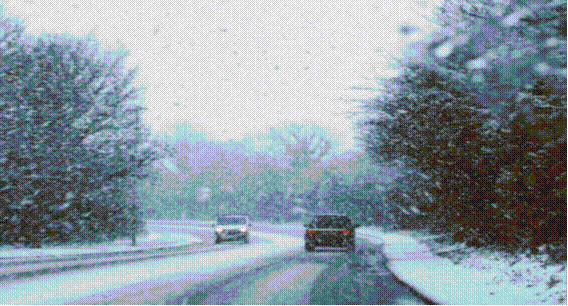


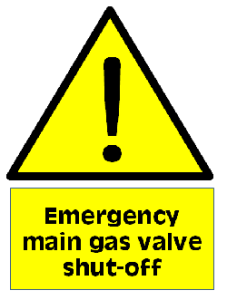








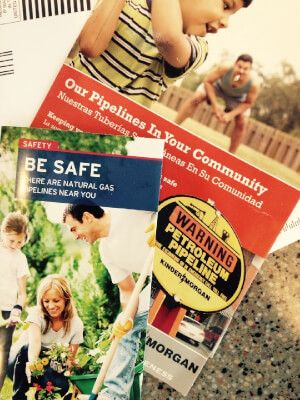
 Keep your eye open for pipeline signs. They are not required, nor are they necessarily placed in the same way every time. What they seem to have in common is the gold color.
Keep your eye open for pipeline signs. They are not required, nor are they necessarily placed in the same way every time. What they seem to have in common is the gold color. The point of all this is that with some digging (bad joke!) you can discover a lot about where pipelines are in your community and who is responsible for them.
The point of all this is that with some digging (bad joke!) you can discover a lot about where pipelines are in your community and who is responsible for them.
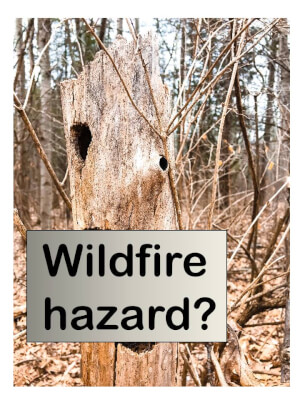 Wildfires are now a year-round threat
Wildfires are now a year-round threat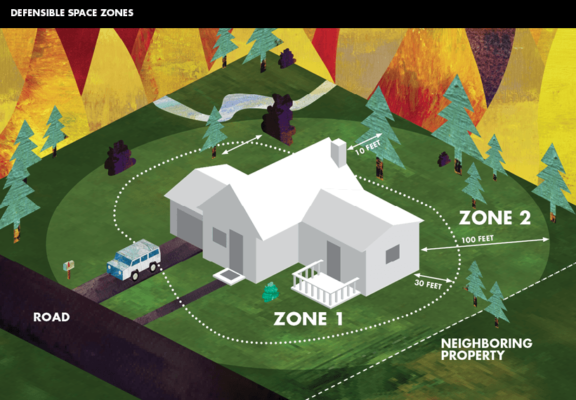

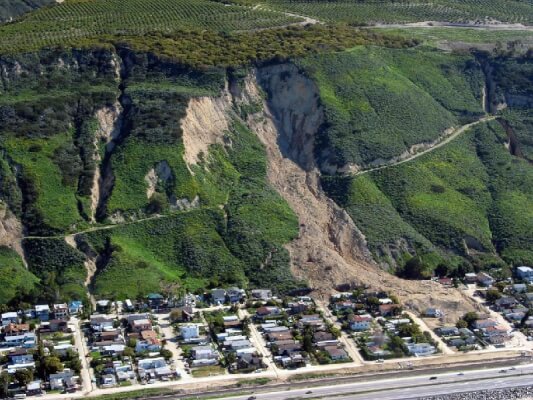
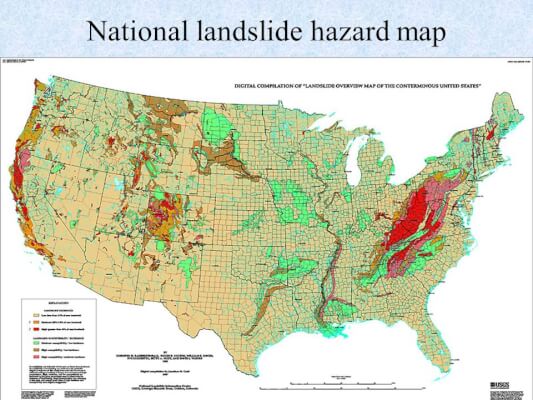

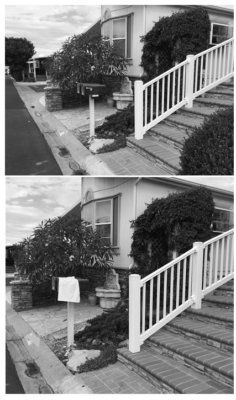
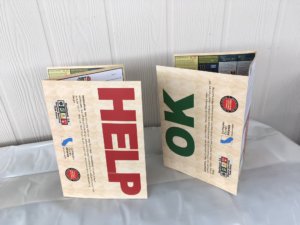 Advantages of the colored card system:
Advantages of the colored card system:






